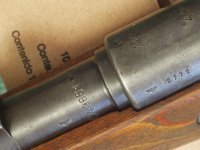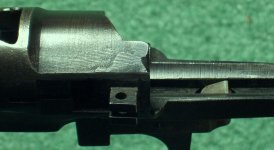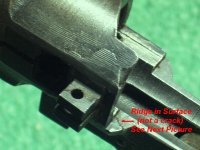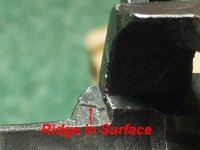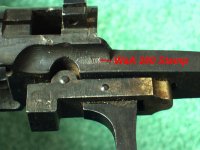http://www.library.yale.edu/cataloging/music/fraktur1.gif
This has always given me trouble. This looks like a "b" to me, but the construction and date in the barrel channel of the stock (32nd week of 1942) puts it at L. It's a receiver which has extra proofs and defects that were repaired, so it could have been recycled back through, however, it's vertical script, not slant (early '42). Unless.......Thanks y'all.

This has always given me trouble. This looks like a "b" to me, but the construction and date in the barrel channel of the stock (32nd week of 1942) puts it at L. It's a receiver which has extra proofs and defects that were repaired, so it could have been recycled back through, however, it's vertical script, not slant (early '42). Unless.......Thanks y'all.


